Brown spots on ceilings are not just ugly; they are also a potential indicator of a larger problem. Brown stains on ceilings can be avoided with regular maintenance and adequate insulation, which can be caused by a number of different problems. There are methods that can safely and effectively get rid of brown spots.
Roofs often develop brown spots from algae, which can be identified by their dark greenish-black color. Algae can grow on roofs due to the moist environment and warm temperatures of a shaded area, and it can be difficult to remove. You can stop the mold from spreading by cleaning the roof and putting a zinc-based fungicide on it.
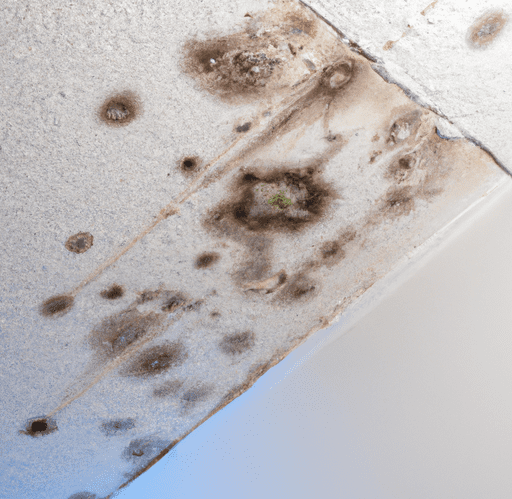
Leaky roofs are the main cause of brown ceiling spots. Staining on the ceiling may be the result of water leaking through a damaged roof.
Several problems, including tile cracks, poor flashing, and a damaged seal, can lead to this. Brown spots on the ceiling may be the result of water seeping in from the roof.
Inspecting the roof on a regular basis, fixing any damage, and sealing any openings can help prevent this issue. If brown spots have already appeared, it is best to have a roofing expert look at the damage and make repair suggestions.
Brown spots on the ceiling are another sign of poor attic ventilation. If the attic doesn't have enough air circulation, water might build up and drip through the ceiling.
This can create dark and damp spots, which can eventually lead to mold growth. Spots on the ceiling are a warning sign that you need to check for water leaks and increase ventilation in the attic.
Moisture buildup in the attic, caused by poor insulation, can also cause the ceiling to develop ugly brown stains. To avoid having moisture seep into your home due to improper insulation, it is important to have enough of it.
Make sure the insulation in your attic is complete, including the walls, floor, and ceiling. Also, make use of insulation material to seal any cracks or openings that might allow air to escape. Attic ventilation is also essential for preventing mold and mildew growth. Last but not least, it's important to routinely inspect the attic for signs of water damage, such as discoloration or mold growth.
Brown spots can occur on walls, ceilings, and other surfaces due to environmental factors. In certain cases, the culprits of these discolorations are mold and cigarette smoke.
Mold is a fungus that can alter a surface's color. In most cases, high levels of humidity are to blame. Mold, in addition to being allergenic and asthmatic, can emit a musty odor. Brown spots can be avoided if you take precautions against mold.
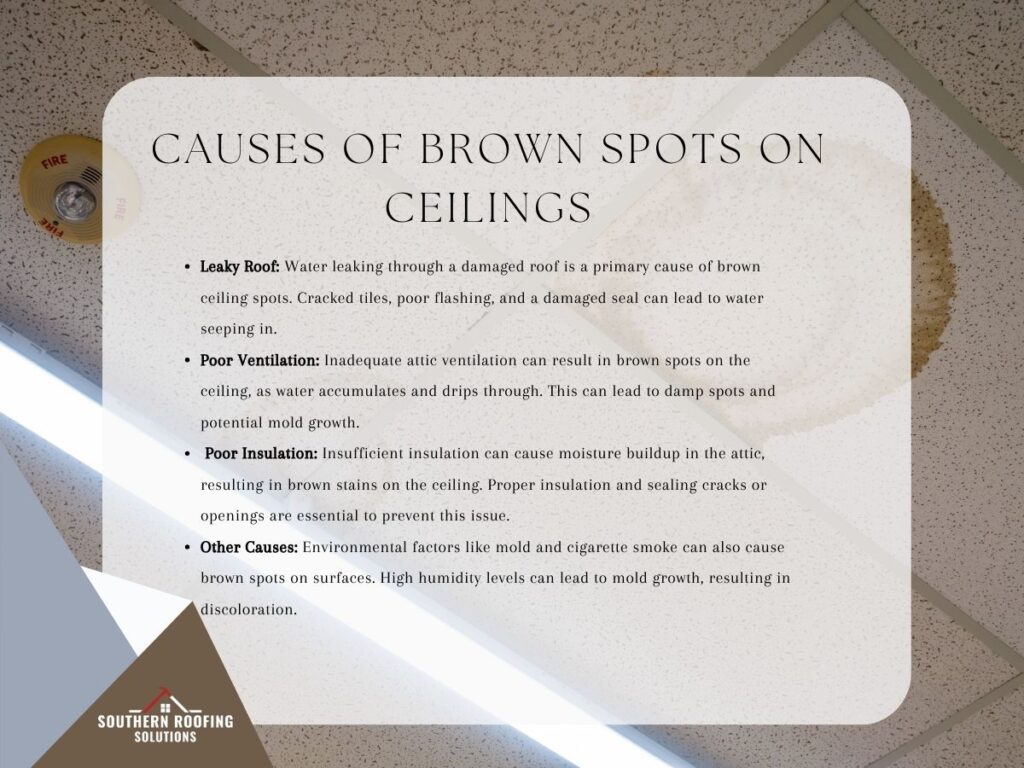
Typical moisture problems that lead to mold growth are:
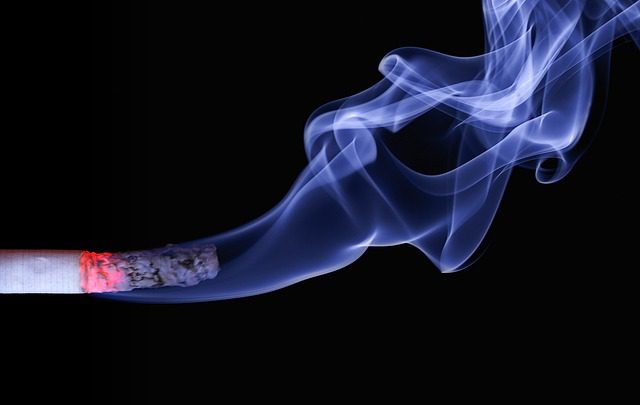
Walls and ceilings can get brown spots from cigarette smoke, too. Toxins and chemicals in the smoke can cause discoloration of surfaces.
Not only is the odor unpleasant, but smoking cigarettes has been linked to asthma and other allergic reactions. Brown spots can be avoided if measures are taken to reduce cigarette use.
Examples of this include installing air filters and making sure that people aren't allowed to smoke inside.
Maintaining a roof properly is your best defense against ceiling brown spots. Having your roof inspected and repaired on a regular basis can help to ensure that water will be kept out of your home.
Brown spots on the ceiling can be restored by applying a sealant over them. Because of this, the area will be protected from moisture, which could lessen the extent of the spots' appearance.
You should probably have a professional roofer take a look at your roof if the spots don't go away or get worse. It's possible that they'll need to replace shingles or fix some other damage to figure out what's causing the brown spots in the ceiling.
After the roof has been fixed, it's important to keep up with routine maintenance like checking for leaks and ensuring the shingles are in good shape. Doing so can keep water damage to a minimum and your home safe.
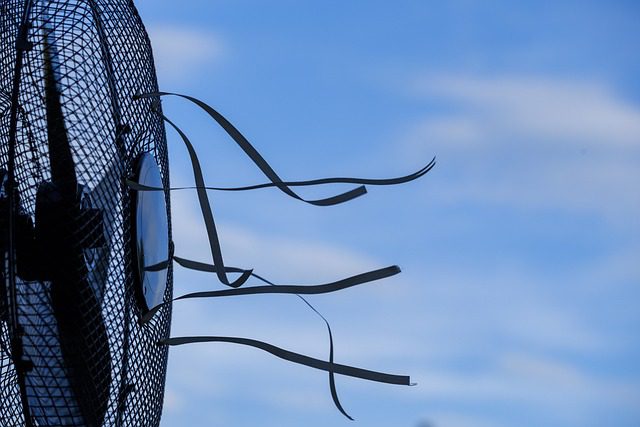
Having a well-ventilated attic is also important for avoiding brown spots. It's important to have enough insulation and ventilation in the attic to prevent moisture from building up.
Brown stains can also be prevented with the help of good insulation. Make sure there is enough insulation in the attic to prevent water damage.
Attic insulation prevents condensation by maintaining a constant temperature in the attic. In addition to lowering the potential for mold and mildew growth, attic ventilation helps keep air flowing through the space.
Brown spots caused by mold and mildew are less likely to appear if these two conditions are met.
Cleaning the affected area is the first step in reducing brown stains. This staining could be caused by dirt or debris, which can be removed using a mild detergent and a soft cloth.
If the brown stains are due to water, scrubbing the area with a solution of vinegar and water can help remove them.
Additionally, scrubbing the area with a solution of bleach and water can also help to remove the stains. If the stains are due to rust, using a rust remover or sandpaper can help remove them.
Once the area has been cleaned, you can look for the cause behind the brown spots. If a leaking roof is to blame, immediate action is required.
You can adjust your watering schedule accordingly if the bare spots are due to a lack of water or an excess of water. You may need to use a fungicide to get rid of the spots if they were brought on by a fungal infection. Identifying the root of the issue is the first step toward resolving it.
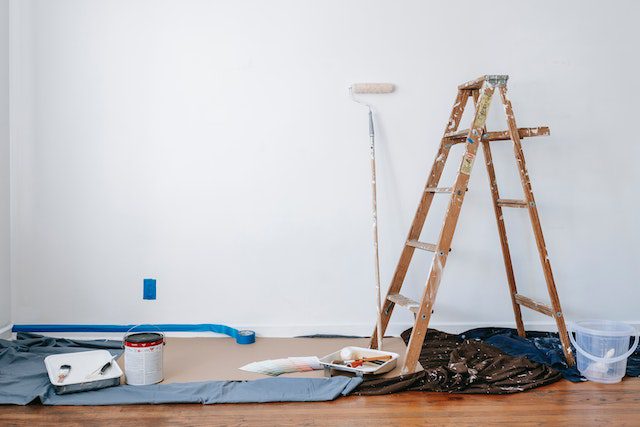
If the brown spots are caused by something other than a leaky roof, you can paint the ceiling to cover up the discoloration. Make sure to use a paint that is designed for ceilings, and follow the manufacturer’s instructions for application.
If a leaky roof is to blame for the ceiling's discoloration, fixing the roof should be done before painting the ceiling. If you can't figure out what's causing the discoloration on your own, call a professional to take a look.
Ghosting is typically brought on by dust or dirt that has settled on a surface. Using an infrared camera, you can see that this material has a unique thermal signature.
Ghosting can be seen without the use of a special camera, such as an infrared or thermal camera. The thermal imaging camera, on the other hand, clearly shows the anomaly because of the temperature differences on the material's surface, which the camera displays in vibrant colors.
Water stains can be difficult to paint over. Using a can of latex paint to cover up a stain isn't always the best option because the spot may return quickly. However, you would be on the right track if you decided to cover the stain with a stain sealer or stain-blocking paint.
However, the initial cause of the stain should be addressed before any other measures are taken. Once that is taken care of, you can put on the stain protector. The final coat of ceiling paint can be applied once it has dried and cured.
Do you ever take the time to gaze upward? Can you easily detect if it has a problem? No matter how lovely the rest of the room is, brown spots on the ceiling will always detract from its attractiveness. If your ceiling is damaged, you might not know it until you notice ugly brown spots.
Thanks to the fact that nearly all ceilings are white, it's easy to spot any damage. Brown spots can be removed by blotting them with water or a bleach solution and then wiping them clean. After the cleaned area has dried, you can paint over it. These brown spots might be mold growth, drywall nails, or rust in a plaster ceiling.
This is why it's important to have a licensed plumber take a look at the situation. However, before attempting to repair the brown spots, you should investigate their origins.
You've probably seen those annoying water stains on the ceiling elsewhere, like at the office or a friend's place. It's unsettling to be snug and dry indoors during a storm, only to look up and see water dripping from the ceiling. One's first thought is likely that there's a leak somewhere in the roof.
The presence of water stains and spots signals the need to investigate the source and, if necessary, schedule roof repairs or a replacement. After a devastating storm, you'll be glad you took the time and effort to protect your home and keep its value intact.
If your roof experiences a leak during a storm, the first thing you should do is figure out how bad the damage is. Check to see if the problem is a small drip or a major breach requiring immediate action. If the leak isn't too bad, you can probably wait until the storm passes before fixing it.
However, if the leak is significant, immediate action is required. Find the source of the leak and use tarps or buckets to collect the water. If there are any electrical outlets in close proximity to the leak, make sure you turn them off before attempting to fix the leak.
As soon as the storm has passed, you should get in touch with a professional roofer to inspect the damage and begin fixing it. Water damage and mold growth can be avoided if the leak is fixed properly.
Until you can get a professional roofer out there, there are some things you can do to keep the elements out of your home. Put buckets or tarps under the leak and, if necessary, cover the area with plastic sheeting to stop water from getting into your home.
If you find a leak in your roof, you should fix it immediately. Investing in measures to keep your house and its belongings safe will pay off in the long run.
Brown stains on the ceiling are a sign of a more serious problem. Proper roof maintenance, including adequate ventilation and insulation, is the best defense against brown spots. If your ceiling has brown spots, you can get rid of them once and for all by cleaning the affected area, fixing the problem, and painting over the ceiling.
Brown spots have multiple possible causes, including mold and cigarette smoke. It's crucial to take precautions against these causes of discoloration. Dehumidifiers and adequate ventilation are also part of this strategy for managing moisture and humidity. In addition, it is crucial to avoid smoking indoors, make regular use of air purifiers, and clean and vacuum frequently. It's crucial to find out what's causing brown spots and then get rid of them if they appear.